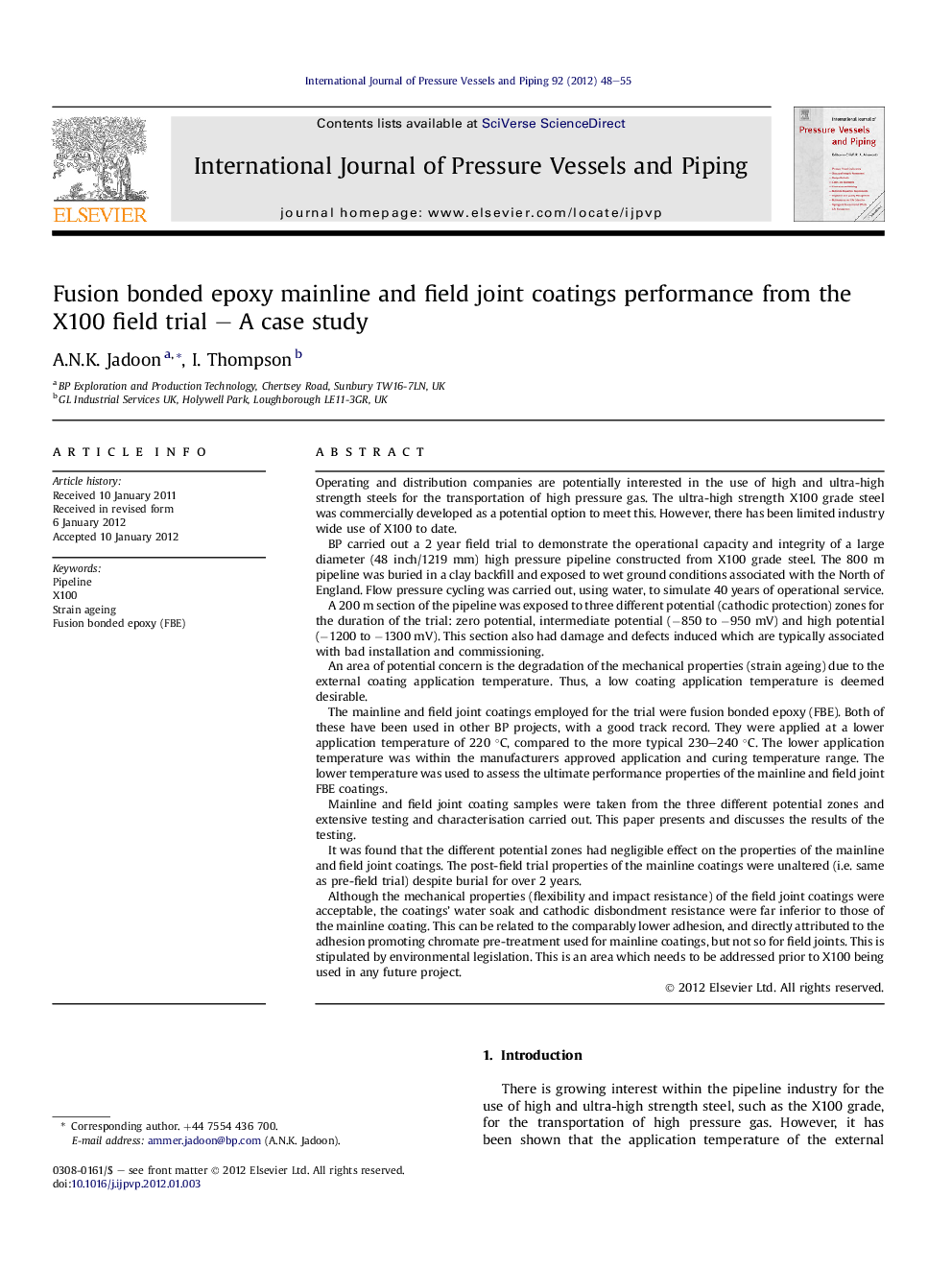| کد مقاله | کد نشریه | سال انتشار | مقاله انگلیسی | نسخه تمام متن |
|---|---|---|---|---|
| 785427 | 1466094 | 2012 | 8 صفحه PDF | دانلود رایگان |

Operating and distribution companies are potentially interested in the use of high and ultra-high strength steels for the transportation of high pressure gas. The ultra-high strength X100 grade steel was commercially developed as a potential option to meet this. However, there has been limited industry wide use of X100 to date.BP carried out a 2 year field trial to demonstrate the operational capacity and integrity of a large diameter (48 inch/1219 mm) high pressure pipeline constructed from X100 grade steel. The 800 m pipeline was buried in a clay backfill and exposed to wet ground conditions associated with the North of England. Flow pressure cycling was carried out, using water, to simulate 40 years of operational service.A 200 m section of the pipeline was exposed to three different potential (cathodic protection) zones for the duration of the trial: zero potential, intermediate potential (−850 to −950 mV) and high potential (−1200 to −1300 mV). This section also had damage and defects induced which are typically associated with bad installation and commissioning.An area of potential concern is the degradation of the mechanical properties (strain ageing) due to the external coating application temperature. Thus, a low coating application temperature is deemed desirable.The mainline and field joint coatings employed for the trial were fusion bonded epoxy (FBE). Both of these have been used in other BP projects, with a good track record. They were applied at a lower application temperature of 220 °C, compared to the more typical 230–240 °C. The lower application temperature was within the manufacturers approved application and curing temperature range. The lower temperature was used to assess the ultimate performance properties of the mainline and field joint FBE coatings.Mainline and field joint coating samples were taken from the three different potential zones and extensive testing and characterisation carried out. This paper presents and discusses the results of the testing.It was found that the different potential zones had negligible effect on the properties of the mainline and field joint coatings. The post-field trial properties of the mainline coatings were unaltered (i.e. same as pre-field trial) despite burial for over 2 years.Although the mechanical properties (flexibility and impact resistance) of the field joint coatings were acceptable, the coatings' water soak and cathodic disbondment resistance were far inferior to those of the mainline coating. This can be related to the comparably lower adhesion, and directly attributed to the adhesion promoting chromate pre-treatment used for mainline coatings, but not so for field joints. This is stipulated by environmental legislation. This is an area which needs to be addressed prior to X100 being used in any future project.
Journal: International Journal of Pressure Vessels and Piping - Volume 92, April 2012, Pages 48–55